

These numbers will blow your mind and make you want to join a union. Still have lingering doubts about whether or not there's a union advantage?

Well, get ready for this: Unionized workers in Canada earn, on average, 22.9% more than their non-unionized friends, working out to an average hourly wage of $27.71 compared to $22.54. In other words, a union will get you an extra $5.17 per hour on average. And that doesn't just benefit union members. Those union paycheques pump close to a billion dollars ($823.3 million, to be exact) back into local communities and the Canadian economy each week, often in small towns. Creating Value Through Business Model Innovation. References (28) 1.
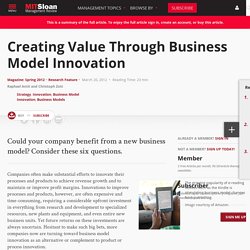
“Business 2010: Embracing the Challenge of Change,” white paper, Economist Intelligence Unit, New York, February 2005, p. 9. 2. Social_credit_by_ch_douglas. Green syndicalism. Green syndicalism or eco-syndicalism is a form of anarcho-syndicalism that focuses on the abolition of capitalism and the establishment of a democratic regime of workers' control as a means of effectively resolving issues surrounding climate change and the destruction of the natural environment, which advocates understand to be the logical consequences of free market capitalism and the regime of production for private profit rather than for the satisfaction of human needs.[1] Background[edit] Its methods are a fusion of the trade union, more robust methods from formal syndicalism, and the direct action and workplace democracy movements (some members of the Environmental Unionist Caucus of the IWW identify as green syndicalists).
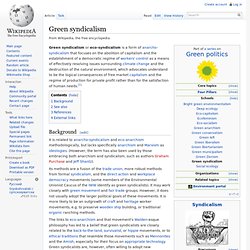
It may work closely with green movement and fair trade groups. However, it does not usually adopt the larger political goals of these movements. Bright green environmentalism. [edit] Definition Bright green environmentalismW, as defined in Wikipedia: aims for a society that relies on new technology and improved design to achieve gains in ecological sustainabilityW without reducing (indeed, increasing) the potential for economic growth.
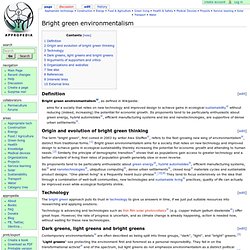
Its proponents tend to be particularly enthusiastic about green energy, hybrid automobilesW, efficient manufacturing systems and bio and nanotechnologies, are supportive of dense urban settlementsW. [edit] Origin and evolution of bright green thinking Its proponents tend to be particularly enthusiastic about green energyW, hybrid automobilesW, efficient manufacturing systems, bioW and nanotechnologiesW, ubiquitous computingW, dense urban settlementsW, closed loopW materials cycles and sustainable product designs. [edit] Technology The bright green approach puts its trust in technology to give us answers in time, if we just put suitable resources into researching and applying solutions.
A Brighter Shade of Green: Rebooting Environmentalism for the 21st Century. In honor of Earth Day, I wanted to share an article written by my former colleague Ross Robertson for EnlightenNext magazine called “A Brighter Shade of Green: Rebooting Environmentalism for the 21stCentury.”
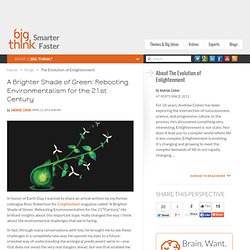
His brilliant insights about this important topic really changed the way I think about the environmental challenges that we’re facing. In fact, through many conversations with him, he brought me to see these challenges in a completely new way. He opened my eyes to a future-oriented way of understanding the ecological predicament we’re in—one that does not avoid the very real dangers ahead, but one that enabled me to see this crisis as pregnant with the potential to re-envision our relationship to the natural world in the most compelling and unimaginable way possible.
I hope it does the same for you. Interest-free banking is a practical tool for building community wealth - Fund for Democratic Communities. JAK Members Bank I am happy to report that the old saying “there is more than one way to skin a cat” applies to the banking industry as well.
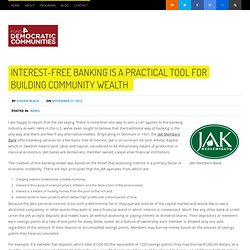
Here in the U.S. we’ve been taught to believe that the traditional way of banking is the only way and there are few if any alternative models. Originating in Denmark in 1931, the JAK Members Bank offers banking services on a fee basis, free of interest. JAK is an acronym for Jord, Arbete, Kapital which in Swedish means land, labor and capital, considered to be the primary means of production in classical economics. JAK banks are democratic, member owned, cooperative financial institutions. The creation of this banking model was based on the belief that assessing interest is a primary factor in economic instability. Mondragon Corporation. Mondragon cooperatives operate in accordance with Statement on the Co-operative Identity maintained by the International Co-operative Alliance.

History[edit] JAK Members Bank. The JAK Members Bank, or JAK Medlemsbank, is a cooperative, member-owned financial institution based in Skövde, Sweden, and based on a concept that arose in Denmark in 1931.[1][2][3] JAK is an acronym for Jord Arbete Kapital in Swedish or Land Labour Capital, the factors of production in classical economics.
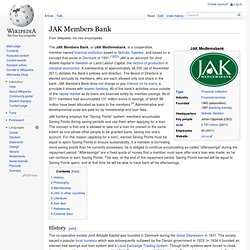
A membership of approximately 38,000 (as of November 2011) dictates the Bank's policies and direction. The Board of Directors is elected annually by members, who are each allowed only one share in the bank. JAK Members Bank does not charge or pay interest on its loans, a principle it shares with Islamic banking. All of the bank's activities occur outside of the capital market as its loans are financed solely by member savings. As of 2011 members had accumulated 131 million euros in savings, of which 98 million have been allocated as loans to the members.[4] Administrative and developmental costs are paid for by membership and loan fees. History[edit] Philosophy[edit] Membership[edit] The JAK Bank: Interest Free Full Reserve Banking! The JAK Bank provides us with an important model for interest free saving and lending.
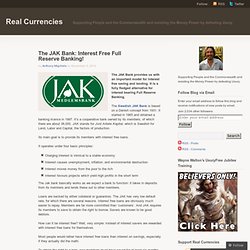
It is a fully fledged alternative for interest bearing Full Reserve Banking. The Swedish JAK Bank is based on a Danish concept from 1931. It started in 1965 and obtained a banking licence in 1997. It’s a cooperative bank owned by its members, of which there are about 38,000. JAK stands for Jord Arbete Kapital, which is Swedish for Land, Labor and Capital, the factors of production. Its main goal is to provide its members with interest free loans. It operates under four basic principles: Charging interest is inimical to a stable economyInterest causes unemployment, inflation, and environmental destructionInterest moves money from the poor to the richInterest favours projects which yield high profits in the short term. What is Social Credit? What is Social Credit In a nut shell Social Credit is a process that allows the wealth of a nation be shared among its people.
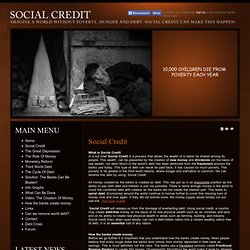
This wealth can be presented by the creation of new money and dividends (on the basis of real wealth, not debt) Much of the world’s debt has been attributed from the fraudulent process the banks use today. This type of debt can never be paid back, it has caused so much poverty. This poverty is far greater in the third world nations, where hunger and starvation is common. We can reverse this debt by using Social Credit. All money created by the banks is created as debt. Social Credit will release us from this bondage of everlasting debt. How the banks create money Before we go further it is important that you understand how the banks create money. Central Banks apart from creating new money as debt (or credit very rarely) control the ratio of deposits the Commercial banks can lend.
See link below How Social Credit works The role of money Credit Creation. Social Credit Party. In the depths of the Depression, a radio evangelist with a golden tongue preached a new economic gospel. We're All Infrastructure Socialists. Why Is Socialism Doing So Darn Well in Deep-Red North Dakota? North Dakota's thriving state bank makes a mockery of Wall Street's casino banking system – and that's why financial elites want to crush it. North Dakota is the very definition of a red state. It voted 58 percent to 39 percent for Romney over Obama, and its statehouse and senate have a total of 104 Republicans and only 47 Democrats. Can Benefit Corporations Work? In recent years, Warby Parker has become the eyeglass-maker of choice for hipsters. In a recent GQ taxonomy of the different varieties of nerd, all but one of the nerds were wearing a pair of Warby Parkers.
The company’s approach—selling stylish specs at affordable prices—seems obvious, but, in an industry where brand-name glasses cost two or three hundred dollars a pair, it counts as revolutionary.